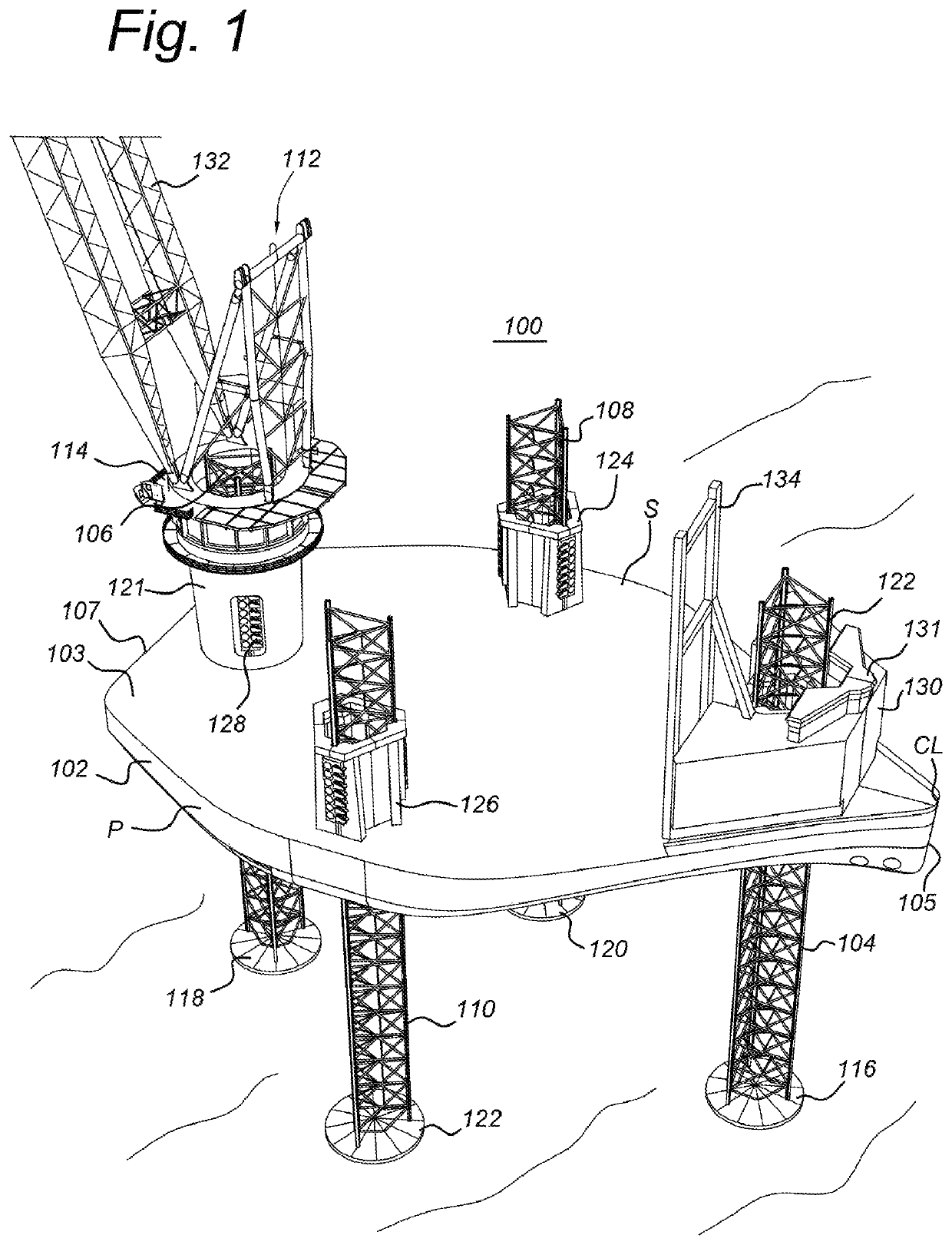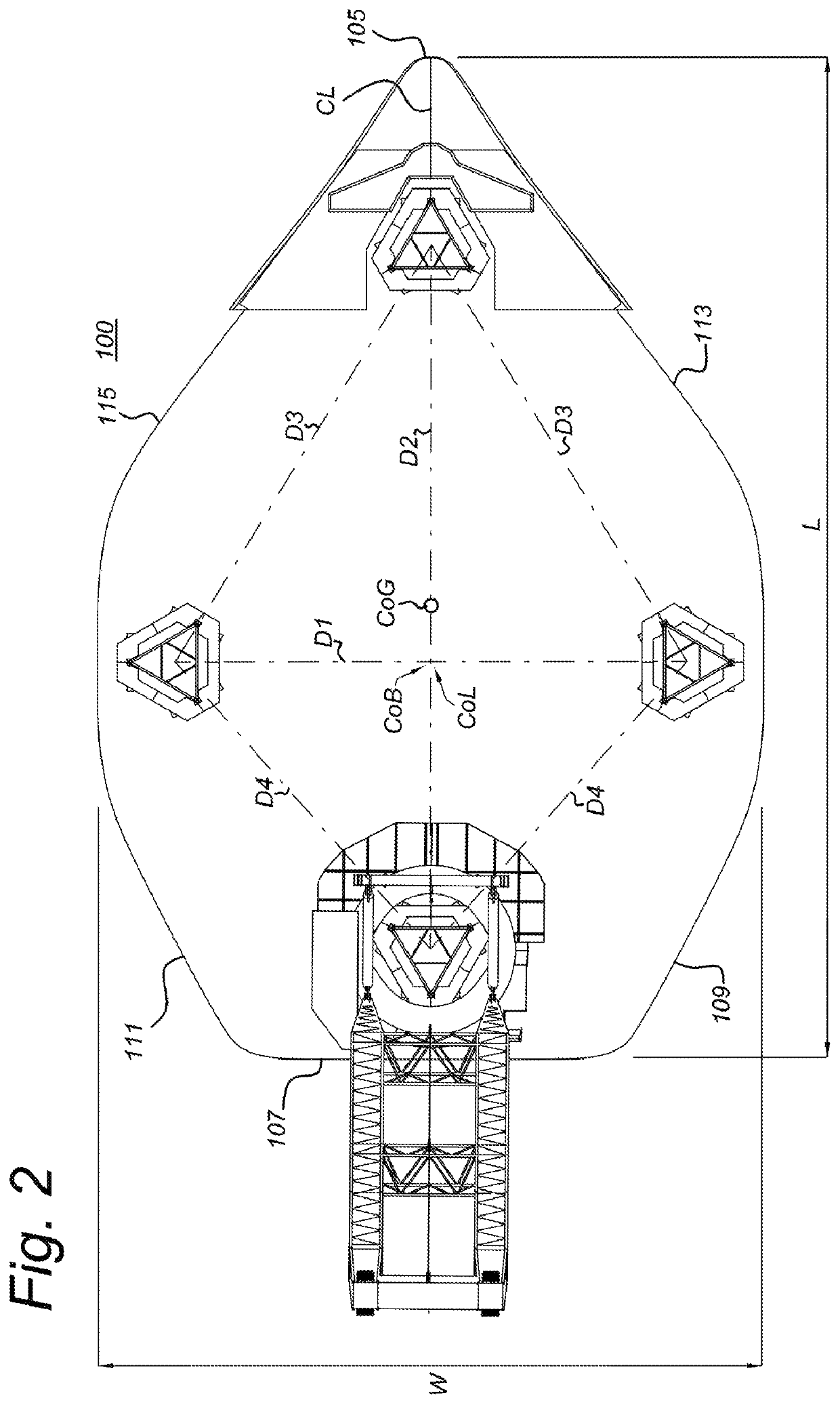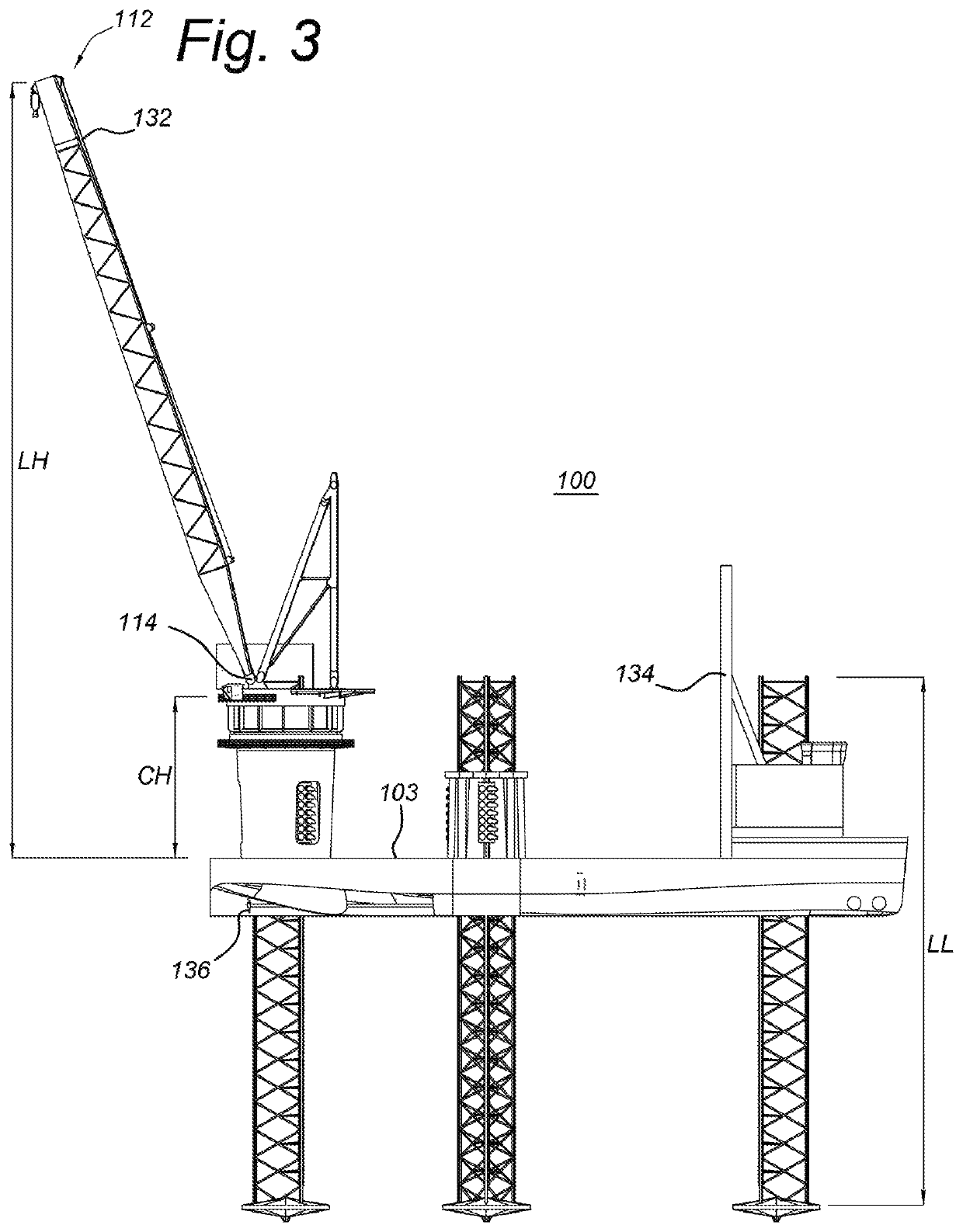Self-propelled jack-up vessel
a self-propelled, jack-up barge technology, applied in the direction of floating buildings, transportation and packaging, passenger handling apparatus, etc., can solve the problems of limited transportation use, time taken to move the jack-up barge, and generally not suited to travelling any distance offshore, so as to achieve the effect of greater structural stability of the vessel
- Summary
- Abstract
- Description
- Claims
- Application Information
AI Technical Summary
Benefits of technology
Problems solved by technology
Method used
Image
Examples
Embodiment Construction
[0047]FIG. 1 shows a self-propelled, jack-up vessel 100 according to an embodiment of the invention. The vessel 100 is provided with a hull 102 and a deck 103.
[0048]A centreline CL extends from the bow 105 to the stern 107, defining the direction of travel of the vessel, and dividing the vessel into two main sides, namely the port side P and the starboard side S.
[0049]Four legs extend through the hull 102 and deck 103, namely a bow leg 104, a stern leg 106, a port leg 108, and a starboard leg 110. The legs 104, 106, 108, and 110 are shown in their deployed position, in which they extend downwards towards the seabed (not shown). They may be partially or fully retracted to a position in which they extend further above the deck 103 via jacking systems 122, 124, 126, and 128, respectively.
[0050]The legs 104, 106, 108, and 110 are fitted with spud cans 116, 118, 120, 122, respectively, for supporting the leg on the seabed.
[0051]A main crane 112 is mounted around the stern leg 106 via a c...
PUM
 Login to View More
Login to View More Abstract
Description
Claims
Application Information
 Login to View More
Login to View More - R&D
- Intellectual Property
- Life Sciences
- Materials
- Tech Scout
- Unparalleled Data Quality
- Higher Quality Content
- 60% Fewer Hallucinations
Browse by: Latest US Patents, China's latest patents, Technical Efficacy Thesaurus, Application Domain, Technology Topic, Popular Technical Reports.
© 2025 PatSnap. All rights reserved.Legal|Privacy policy|Modern Slavery Act Transparency Statement|Sitemap|About US| Contact US: help@patsnap.com



